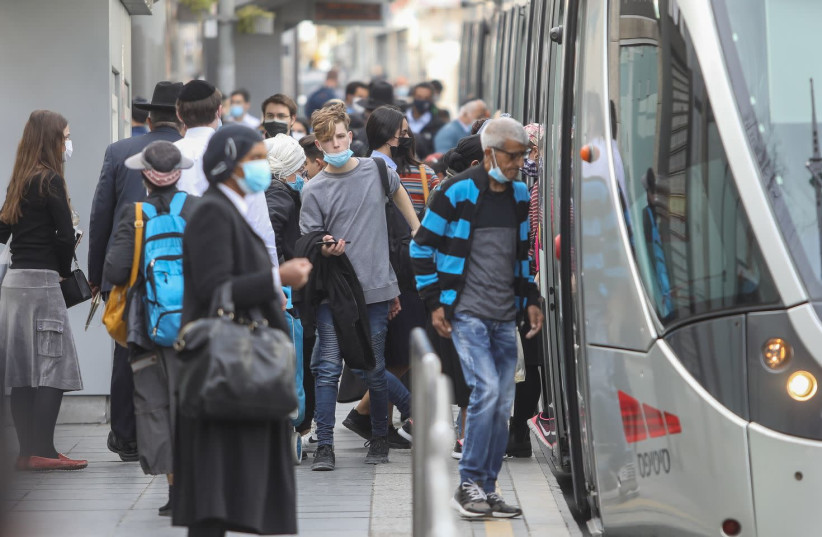When someone falls over in the street in Israel, a dozen people immediately rush forward to help the victim of the mishap, and a dozen more kibbitzers stand around to offer advice.
But this surfeit of goodwill does not apply in so many other spheres.
Public transportation is one of the best examples of lack of consideration.
Passengers place kitbags and parcels on the seat next to them and are resentful when asked to move them so that someone else can sit down. Those with shopping carts, when boarding the bus or light rail, will push ahead of others who were there before them, ignoring the blind, the elderly or pregnant women. Once inside the vehicle, they will park their carts in the aisle, making it difficult for other passengers to pass.
The concept of a queue in Israel exists primarily at the international airport, but in banks, post offices, hospital outpatients departments, pharmacies, and various government offices, there’s a very good reason why people are asked to take a number.

Even more ubiquitous than shopping carts on public transportation are baby carriages, which have become more sophisticated, taller, longer and wider. In Jerusalem, and probably in other parts of the country, there appears to be a glut of multiple births or siblings born within a year of each other, judging by the number of double baby carriages being wheeled in neighborhoods all over the city.
Modern buses now have special provisions for people in wheelchairs. When there are no such passengers, there’s enough room in this area to comfortably fit two baby carriages. Some mothers do place the carriages there, but there are others who enter the bus via the front door and place the carriage at the beginning of the aisle, thus blocking the path for other passengers. It’s even worse on the light rail.
A public nuisance
But it’s not only on public transportation that the baby carriages are a nuisance.
Many mothers take the carriages into stores, often blocking the aisles and sometimes blocking the entrance.
There appears to be no consideration for other people who also want to shop but can’t get close enough to the items in which they are interested, because a large baby carriage is an obstruction to their access.
Don’t get me wrong. I love babies. They’re adorable even when they cry and kick up a storm.
My gripe is against the fancy baby carriages, which are fine if you’re going for a neighborhood stroll or a walk in the park, but in shops or on public transportation, where the order of the day used to be a folding stroller, they are little short of a nightmare.
Some people, too few, unfortunately, still use strollers when traveling by bus or light rail, but strollers are more in the nature of history than present tense.
To add insult to injury, the baby carriage is often used as a shopping cart when the baby is elsewhere, and of course the carriage takes up much more room than a regular shopping cart.
The only source of comfort is the old adage: What goes around comes around. Maybe strollers will be back in vogue before we know it. ❖
